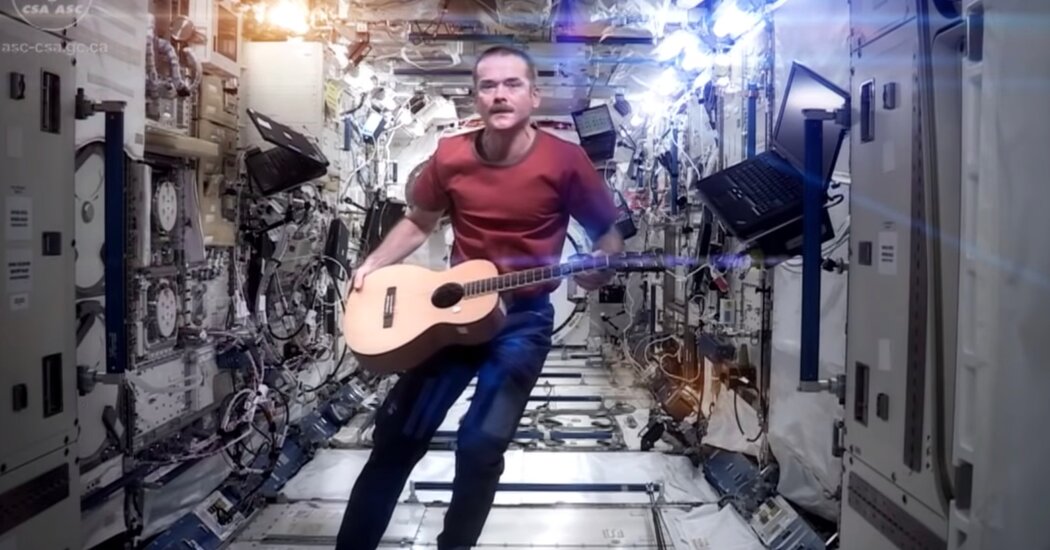Although Chris Hadfield’s performance of David Bowie’s “Space Oddity” ranks among the International Space Station’s most iconic moments, the Canadian astronaut insists he is not a “backwards looking guy.” He prefers to anticipate the next set of challenges in space.
“It seems surreal that we could be settling the moon,” Mr. Hadfield said. “But playing ‘Space Oddity’ from the space station? For a Canadian kid who was born before the very first astronaut even flew in space, that’s pretty surreal. And yet that happened so far just in my lifetime.”
Released in May 2013, Mr. Hadfield’s rendition really made the grade. David Bowie himself praised it as “possibly the most poignant version of the song ever created.”
The video hinted at the station’s potential as a stage and film set. Recent talks between NASA and Tom Cruise suggest that the actor might shoot a movie there, a reflection of the agency’s push to open the I.S.S. to more commercial activities. But if Mr. Cruise makes the trip, it won’t be easy.
“You have limited power, extremely limited circumstances, and he’s not going to be able to bring any production crew up there,” Mr. Hadfield said.
The astronaut had to record the vocal and guitar parts in rare pockets of spare time, although he credits an international ensemble of musicians and contributors with the smashing success of the final version with full instrumentation.
“The wider point of the video, as far as I could see it, was highlighting the multinational contribution of the I.S.S.,” said Elizabeth Howell, an expert on Canada’s space program.
“Hadfield gives us a subtle tour of the I.S.S., highlighting the contributions of many nations,” she added. “And the views of Earth you see in the video are of Earth as a globe, not Earth highlighted in a single region.”
The contributions of international partners have gone beyond sending crew to orbit. Canada’s robotic arm was key to assembling the station; Japan’s Kibo module is an essential orbital science lab, and the European cupola has provided an unparalleled view of Earth.
It’s fitting that Mr. Hadfield, the first Canadian to walk in space and the first Canadian commander of the I.S.S., created such a resonant expression of the station’s most enduring legacy — the awesome power of human collaboration.
“That song isn’t really done justice by just one voice and a guitar,” he said. “It’s a lovely, big, powerful orchestral song.”
Source: Read Full Article
